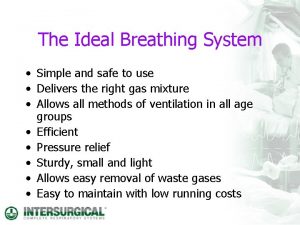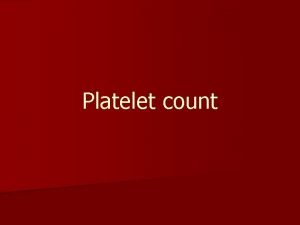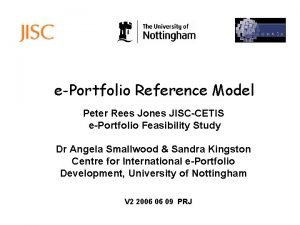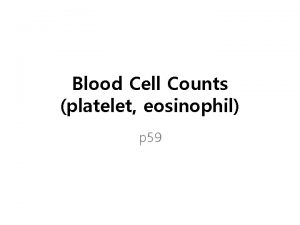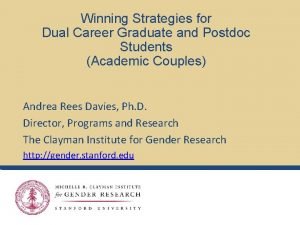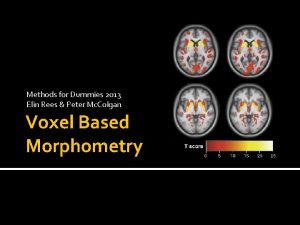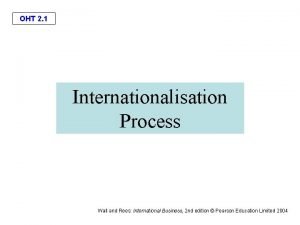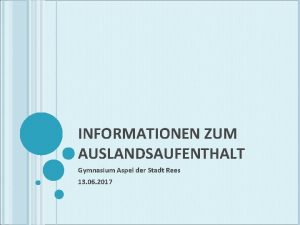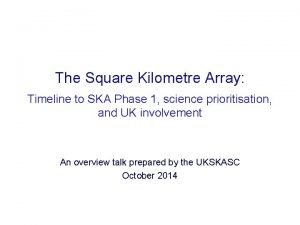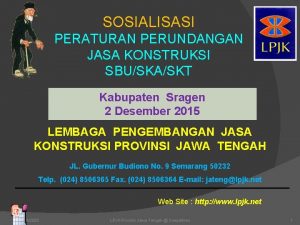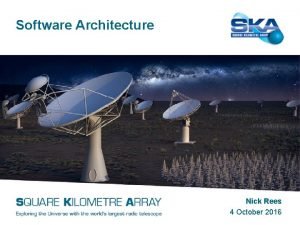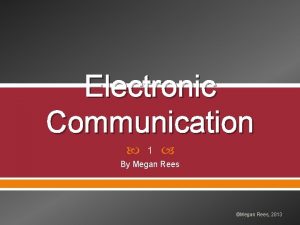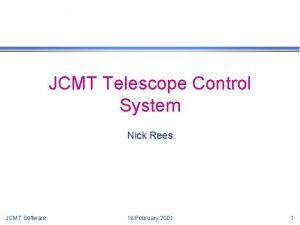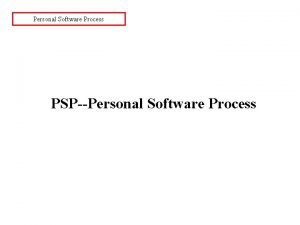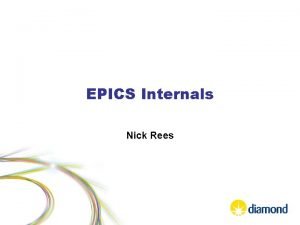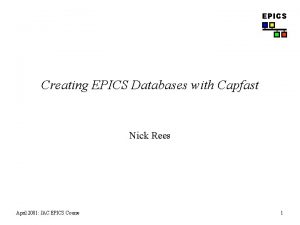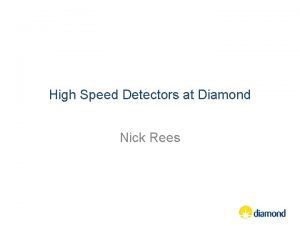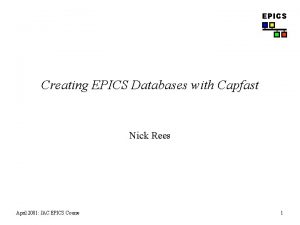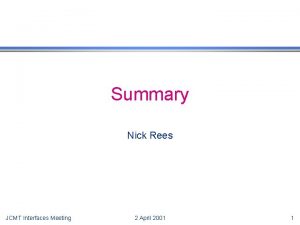SKA Software Engineering Process Nick Rees 7 June












![When? • 25 May: Circulation of proposal to SKAO Engineering teams [Done] • 27 When? • 25 May: Circulation of proposal to SKAO Engineering teams [Done] • 27](https://slidetodoc.com/presentation_image_h/2192c6a2bd5de9d7881576d00d86db88/image-13.jpg)

- Slides: 14

SKA Software Engineering Process Nick Rees 7 June 2016


Summary • What? • Why? • How? • Who? • When? • Questions?

What? • An development process including: • A defined semi-continuous/iterative process of design, development, testing, delivery, integration and verification. • A defined long-term roadmap for each element’s development goals. • Regular reviews scheduled to coincide when each of the periodic goals are delivered where we assess the progress to date and adjust the roadmap for the future.

What? • A toolset to support the efficient development, including: • Communication tools for chat, knowledge capture, and design definition. • A central, globally visible, set of repositories so that we can monitor the current state of code development. • A work manager with defined workflows • Ensures work is well defined and monitored. • A workflow that ensures a code review of all committed code, and pull requests accepted by authorised individuals. • A continuous integration system which ensures the software meets basic QA standards, including: • Software simulations/stubs/drivers/mocks for all major interfaces to enable sub-system and system level tests. • Automated build, test and document generation on commit. • Deployment scripts, which work for bare-metal deployment • Support of core tools? • Openstack, Tango, Casa etc.

What? • Example: LSST Toolchain • Communication • • • Chat: Slack (Hip. Chat deprecated) Forum: Discourse Wiki: Confluence Bugs, issues: Jira, Git. Hub Documentation: Doc. Hub API, re. ST, Jupyter • • • AWS (EC 2, S 3, RDS etc) Google Compute Engine Openstack Fastly / Varnish S 3 / Swift Kubernetes (Swarm? Mesos? ) Puppet & Ansible Elasticsearch / (Logstash|fluentd|Riemann)/ Kibana Docker / virtualisation Vagrant / packer • QA and User Services

What? • A set of basic software standards • Defined preferred software license (an open source permissive license: e. g. Apache 2), and other permissible compatible licences and ways of • Defined primary dependencies, for example: • Languages, O/S, software and GUI frameworks, source code control and deployment systems, • A process of approving and recording additional, element specific, dependencies. • Basic coding standards

What? • Project Management issues • Definition of amount of resourcing • Long and short term resource profile • Identification of ways to support process. • Timescales

Why? • SKA will need over € 100 M of software development. • Not a task for academic programmers • Need professional practices for development, testing, integration and deployment. • Hence, we need to be able to: Have a virtual “meeting place” for all developers. Talk the same language when discussing developments. Have easily accessible, scalable, integration and test facilities. Have ways of measuring and monitoring quality Have confidence that updates won’t break existing systems Reduce the diversity of delivered software so maintenance and operations issues are minimized. • Monitor progress in a consistent way • • •

How? • A harmonization/cross-consortia process based on LMC harmonization and Telescope teams. • Gather input and get consortia to buy into the process: • Largely by email and video but some face to face. • Determine key drivers • Derive common requirements • Consider existing standards and officially endorse and adopt de facto standards • Discuss and develop life cycle model • Identify resources that could be shared • Identify areas of divergence and either: • Work to resolve the differences and generate a harmonized approach • Acknowledge the fundamental differences leading to them and allow multiple approaches

Who? • Myself (project sponsor) • Alex Alberga (Sci. Sys - project manager/technical specialist) • One or 2 representatives from each affected consortia • Up to 1 representative from each EIT. • Additional expertise from the consortia • SDP have engaged The Software Engineering Institute from CMU for this sort of role. • Various countries have direct experience from precursor developments. • Long term resourcing to be defined.

Who? Support TM CSP Office Alex Alberga Nick Rees Marco Caizzo? SDP LFAA DISH SADT AIV Nick Rees Mark Waterson Andrea Cremonini David Bolt? Peter Heckman? Consortia Alan Bridger Sonja Vrcic Christopher Williams Peter Braam Kris Zarb Adami ? ? ?
![When 25 May Circulation of proposal to SKAO Engineering teams Done 27 When? • 25 May: Circulation of proposal to SKAO Engineering teams [Done] • 27](https://slidetodoc.com/presentation_image_h/2192c6a2bd5de9d7881576d00d86db88/image-13.jpg)
When? • 25 May: Circulation of proposal to SKAO Engineering teams [Done] • 27 May: Discussion at EIT Progress Meeting [Done] • 6 June: EPM’s to request comments, nomination of individuals and documentation from CPM’s, with response by 20 June. [Done] • 20 June: Start of process. Engagement of consultant. Evaluation of responses. [Done] • 23 June: Presentation of the LSST Software Engineering Process at SKAO, followed by discussion about how their ideas are relevant to SKA. [Done] • 4 -6 July: Discussion at LMC Harmonization meeting. [Now] • July-August: Development of the process. • October: Presentation of the draft Software Engineering Process at Stellenbosch • Continuous evolution of process thereafter

Questions?
 What is system design in software engineering
What is system design in software engineering Forward engineering and reverse engineering
Forward engineering and reverse engineering Mapleson jackson rees circuit
Mapleson jackson rees circuit Rees and ecker formula
Rees and ecker formula Peter rees jones
Peter rees jones Rees ecker solution
Rees ecker solution Andrea rees davies
Andrea rees davies Dr megan rees
Dr megan rees Victoria rees net worth
Victoria rees net worth Elin rees
Elin rees Peter rees facebook
Peter rees facebook Gymnasium papenburg
Gymnasium papenburg Ska phase
Ska phase Konversi sbu ke kbli 2020
Konversi sbu ke kbli 2020 Ska skills knowledge attitude
Ska skills knowledge attitude


